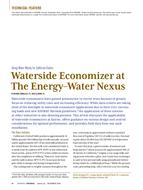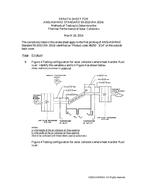Track: Commissioning: Optimizing New and Existing Buildings and their Operation
Sponsor: 1.5 Computer Applications, 4.7 Energy Calculations
Chair: Joshua New, Ph.D., Member, ONRL, Oak Ridge, TN
Development of urban-scale building energy models is becoming increasingly tractable for many applications including city-wide energy supply/demand strategies, urban development planning, electrical grid stability and urban resilience. This seminar has assembled several researchers with capabilities in the field of urban-scale energy models to discuss an overview of the field as well as the data, algorithms, workflow and practical challenges addressed in their applications involving creation of useful models of individual buildings at the scale of a city, urban or metropolitan area.
1. Agent Based Modeling to Estimate the Adoption of Energy Efficient Building Technologies
Ralph Muehleisen, Ph.D., P.E., Member, ANL, Lemont, IL
Agent based modeling (ABM) is a bottom-up method of modeling complex systems that simulates the actions and interactions of autonomous agents. ABM is being used to look at consumer adoption of technologies ranging from cosmetics to electric vehicles and are often used as a replacement for diffusion models. This seminar presents the use of ABM to estimate the adoption of energy efficient building technologies. In the model, building owners make decisions based on a wide variety of economic and non-economic factors. A study of the nationwide adoption of hot water heating technology is shown.
2. Virtual Reality UBEM
Drury Crawley, Ph.D., BEMP, Fellow ASHRAE, Bentley Systems, Inc., Washington, DC
With the advent of urban scale reality models, creating community, campus or Urban Building Energy Models (UBEM) has become as easy as a few hours of capturing photos with a drone. Combining the virtual model with benchmarking, facility, utility, management data and BIM models allows data to be easily queried. This presentation demonstrates several examples of how UBEM can visualize and report on benchmarking, utility and facility management data at the community, campus or urban scale. Virtual navigation of a campus and several cities will demonstrate how UBEM can be used to measure, analyze and report readily available urban data.
Presented: June 28, 2017, 9:45-10:45 AM
Run Time: 60 min.
This is a zip file that consists of PowerPoint slides synchronized with the audio-recording of the speaker (recorded presentation), PDF files of the slides, and audio only (mp3) for each presentation.
Citation: ASHRAE Seminar Recordings, 2017 ASHRAE Annual Conference, Long Beach , CA
Product Details
- Published:
- 2017
- Units of Measure:
- Dual
- File Size:
- 1 file , 34 MB
- Product Code(s):
- D-LB17Sem56


